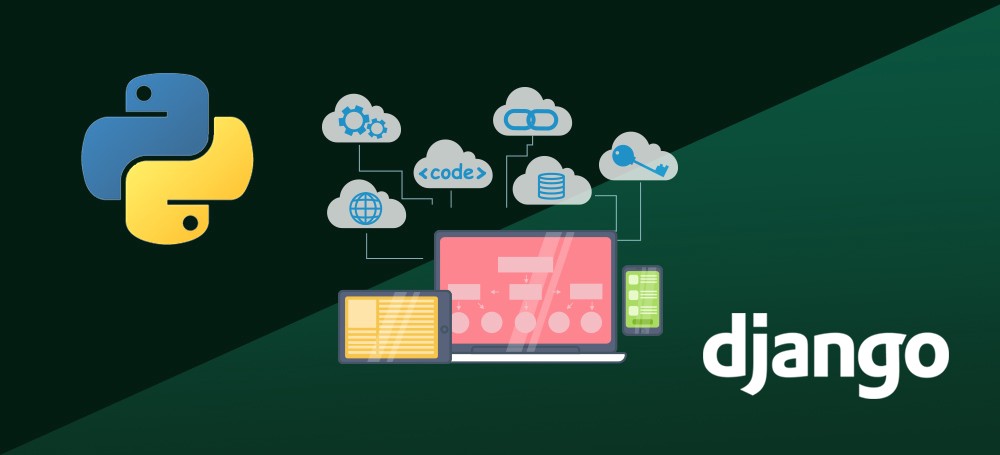In addition to a brief introduction, this article lists and properly explains the “20 most significant features of Django in 2023” and the historical development of the framework.
Introduction
Django is one of the most popular and powerful web development frameworks that has been used to build some of the world’s most sophisticated and complex websites. It’s a high-level Python web framework that encourages rapid development, clean and pragmatic design, and follows the model-template-view architectural pattern. The popularity of Django lies in its ability to provide a wide range of features and functionalities that cater to the needs of modern web development. In this article, we will explore the top 20 most important features of Django that are likely to shape the landscape of web development in 2023.

The features of Django make it an ideal choice for building complex web applications quickly and easily. Some of the key features of Django include its built-in admin interface, which provides a user-friendly interface for managing data in your application. Another important feature is its robust ORM (Object Relational Mapping) system that allows developers to interact with their database using Python objects. Additionally, Django provides a powerful URL routing system that makes it easy to map URLs to views, and it has a built-in templating engine that allows you to create dynamic HTML pages.
In 2023, Python Django is set to become even more important as web development continues to evolve. With its comprehensive set of features, developers can focus on building high-quality web applications that are both scalable and maintainable. Whether you’re a seasoned developer or just starting with web development, Django is an excellent choice that can help you build applications quickly and efficiently. In the following sections, we will take a closer look at the most important features of Django that make it a top contender in the world of web development.
Historical
In 2003, Django was developed at the Lawrence Journal-World. A BSD license was used for its 2005 public release. Its foundation was initially created by Simon Willison and Adrian Holovaty. The task of managing and maintaining the framework was given to the recently established “Django Software Foundation” in 2008.
These are the Features of Django Python Framework:
Table of Contents
Are you looking for a robust and versatile framework to build your web applications in 2023? Look no further than Django! Django is a high-level Python web framework that has been used to build some of the most complex and sophisticated web applications on the internet. In this blog post, we will explore the top 20 must-have features of Django for web development in 2023.
Model-View-Template Architecture:
Django follows the Model-View-Template (MVT) architecture pattern, making it easier to organize your code and separate your business logic from your presentation logic – part of Features of Django.
Django’s Model-View-Template (MVT) architecture pattern separates the code into three distinct components: models, views, and templates. Models define the data structure and the database schema of the application. Views handle the business logic of the application and interact with the models. Templates render the HTML output of the application. This separation of concerns makes it easier to write and maintain code.
Built-in Admin Interface:
Django’s built-in admin interface is one of its most powerful features, providing a user-friendly interface for managing data in your application.
Django’s built-in admin interface provides a user-friendly interface for managing data in your application. You can easily create, read, update, and delete data using the admin interface. Additionally, the admin interface is highly customizable, allowing you to customize the look and feel of the interface to match your application’s branding – Other great Features of Django.
Robust ORM:
Django’s Object Relational Mapping (ORM) system allows developers to interact with their database using Python objects, making it easier to manage and query data.
Django’s Object Relational Mapping (ORM) system allows developers to interact with their database using Python objects, making it easier to manage and query data. The ORM handles database connections, data validation, and schema migrations, making it easier to write database-backed applications.
URL Routing:
Django provides a powerful URL routing system that makes it easy to map URLs to views, allowing for cleaner and more readable code.
Django’s URL routing system is a powerful tool for mapping URLs to views. The URL routing system makes it easy to create clean, readable URLs that are easy to remember and share. Additionally, the URL routing system is highly configurable, allowing you to create complex URL patterns.
Templating Engine:
Django has a built-in templating engine that allows you to create dynamic HTML pages, making it easier to create responsive and scalable web applications.
Django’s built-in templating engine allows you to create dynamic HTML pages. The templating engine uses a syntax that is similar to Python, making it easy to create dynamic content using loops, conditionals, and variables. Additionally, the templating engine provides several built-in filters that allow you to manipulate data before it is rendered.
Django REST Framework:
Django’s REST framework is a powerful tool for building RESTful APIs quickly and easily.
Django’s REST framework is a powerful tool for building RESTful APIs quickly and easily. The REST framework provides a set of tools for building APIs, including serializers, views, and routers. Additionally, the REST framework is highly customizable, allowing you to create APIs that match your application’s specific needs.
Middleware:
Django’s middleware framework provides a way to handle requests and responses before they reach your view functions, allowing for advanced functionality such as authentication and caching – a great part of the features of Django.
Django’s middleware framework provides a way to handle requests and responses before they reach your view functions. Middleware functions can be used for a variety of purposes, including authentication, logging, and caching.
Internationalization:
Django provides built-in support for internationalization, making it easy to build applications that support multiple languages and locales.
Django provides built-in support for internationalization, making it easy to build applications that support multiple languages and locales. The internationalization framework provides tools for translating strings and formatting dates and numbers based on the user’s locale.
Security Features:
Django provides several built-in security features, such as cross-site request forgery protection and password hashing, to ensure the security of your application.
Django provides several built-in security features, including cross-site request forgery (CSRF) protection and password hashing. Additionally, Django provides tools for handling user authentication and authorization.
Scalability:
Django is designed to scale easily, making it an ideal choice for building applications that need to handle a large volume of traffic. Django can be easily configured to run on multiple servers, and it provides several tools for caching and load balancing, an awesome part of the features of Django.
Caching:
Django’s built-in caching framework provides a way to store frequently accessed data in memory, improving the performance of your application. The caching framework supports several different caching backends, including memory caching, file caching, and database caching.
Middleware Framework:
Django’s middleware framework provides a way to handle requests and responses before they reach your view functions. Middleware functions can be used for a variety of purposes, including authentication, logging, and caching.
Forms:
Django provides a powerful form framework that allows you to create and validate forms easily – one of the great features of Django. The form framework handles form validation, rendering, and processing, making it easy to handle user input.
Testing Framework:
Django provides a testing framework that makes it easy to write and run tests for your application, ensuring that your code is functioning correctly.
Django provides a testing framework that makes it easy to write and run tests for your application. The testing framework provides tools for testing views, models, forms, and templates. Additionally, the testing framework provides support for writing unit tests, integration tests, and functional tests.
Django Channels:
Django Channels is a powerful tool for building real-time applications such as chat rooms and web sockets.
Debugging Tools
Django provides a range of debugging tools to help you identify and fix issues in your application. The Django Debug Toolbar provides detailed information about the requests and responses of your application, including SQL queries and template rendering times.
Serialization:
Django provides a built-in serialization framework that allows you to easily convert complex data types such as models and query sets into JSON and other formats.
Built-in Authentication:
Django provides built-in support for user authentication and authorization, another awesome part of the features of django. The authentication system provides tools for handling user registration, login, and logout. Additionally, the authentication system provides tools for restricting access to certain views and resources based on the user’s permissions.
Flexible Configuration Options:
Django provides a range of configuration options that allow you to customize the behavior of your application. The settings file provides a central location for storing configuration variables, and the settings can be overridden at runtime using environment variables or command-line arguments.
Third-Party Libraries:
Django has a large and active community that has built many third-party libraries and packages that can be used to extend the functionality of your application.
In conclusion, Django is a powerful and versatile web framework that has many features that make it an excellent choice for building web applications in 2023. Whether you’re building a small blog or a large-scale web application, Django’s robust features make it a top contender in the world of web development. So what are you waiting for? Start exploring Django’s features today and build your next web application with ease!
Overall, Django provides a comprehensive set of features that make it an ideal choice for building web applications in 2023. Its built-in admin interface, ORM, URL routing, templating engine, REST framework, middleware, internationalization, security features, scalability, caching, forms, testing framework, debugging tools, built-in authentication, and flexible configuration options provide a robust framework for building complex applications quickly and easily. By leveraging these features, developers can build applications that are secure, scalable, and easy to maintain.






Thanks for sharing. I read many of your blog posts, cool, your blog is very good.
Your point of view caught my eye and was very interesting. Thanks. I have a question for you.
Your point of view caught my eye and was very interesting. Thanks. I have a question for you.
Your article helped me a lot, is there any more related content? Thanks!
Your article made me suddenly realize that I am writing a thesis on gate.io. After reading your article, I have a different way of thinking, thank you. However, I still have some doubts, can you help me? Thanks.
The point of view of your article has taught me a lot, and I already know how to improve the paper on gate.oi, thank you. https://www.gate.io/th/signup/XwNAU